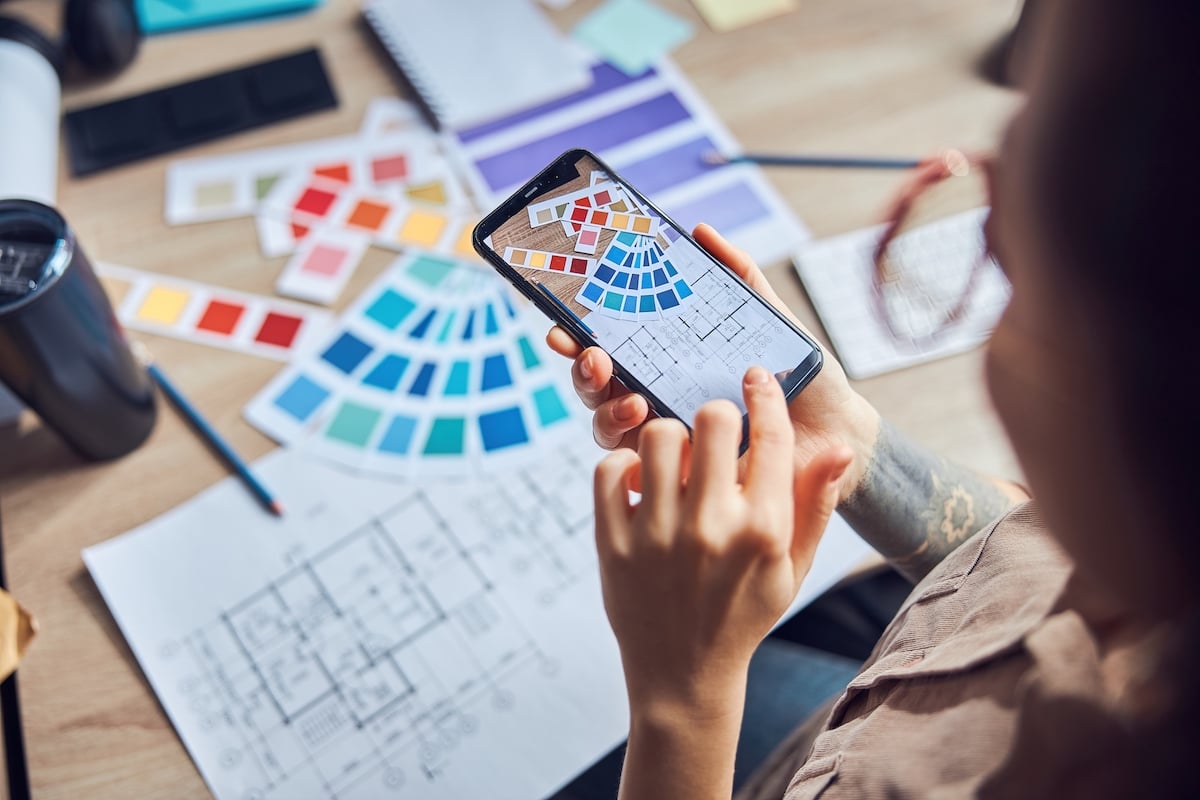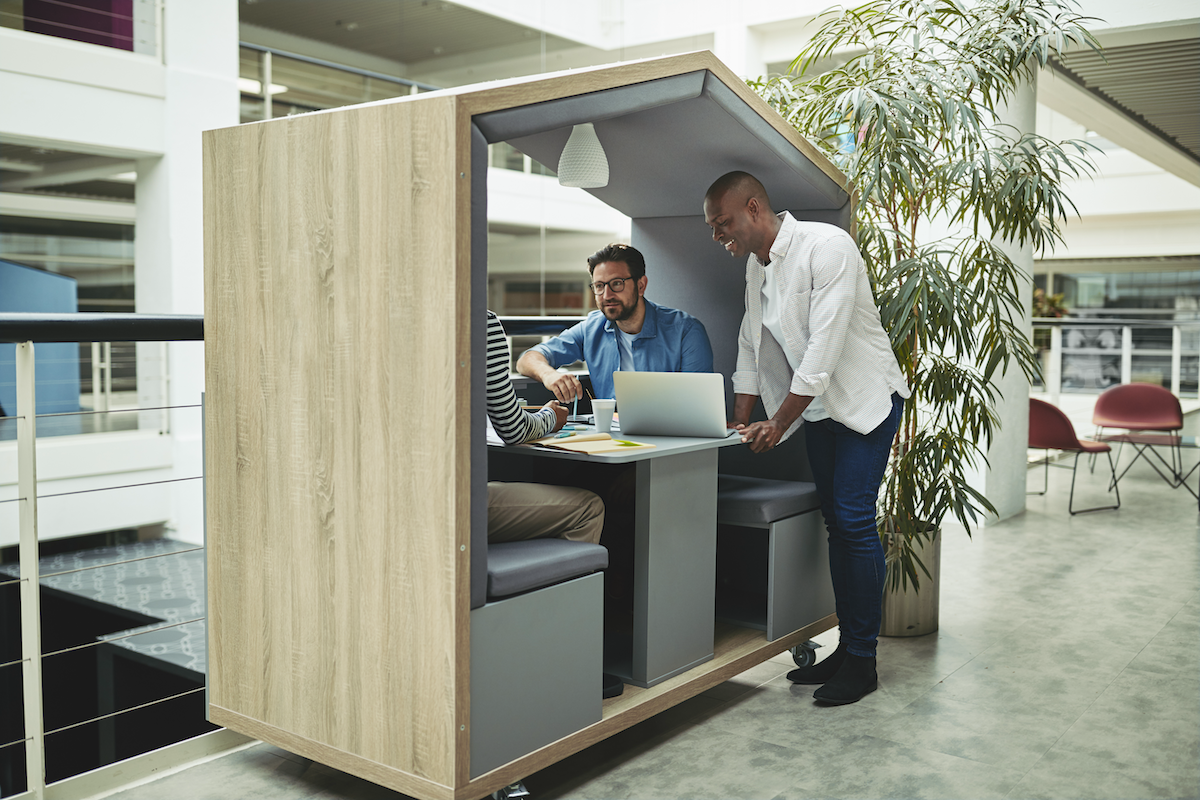
In a recent Metropolis-hosted Think Tank event, Yana Ronin, founder and chief strategist at Fortyseven LLC, suggested that COVID-19 will bring a new tagline for consideration. Just like 9/11 promoted the If you see something, say something messaging, the coronavirus pandemic has made society acutely aware of the holes in our sanitation processes, thus driving a motto aligned with health and safety considerations.
But are we thinking grand enough? Perhaps the pandemic has given us a unique opportunity to take the time to look at our workplace with a fresh lens, understanding what has worked and what hasn’t worked for so long. As Regan Donoghue, wellness expert, leadership strategist, futurist, and problem solver, suggests, “It’s time we stop looking at the workplace and start looking at the workforce.” So by looking at the things that must change as a result of COVID-19, we can identify how those shifts affect the workforce and how we can drive positive difference for the future.
Think long-term about space allocation.
For starters, we must acknowledge that the pandemic has brought to light several problems with our current workplace ecosystem. On one hand, it’s helped us recognize that we need to take a deeper look at space allocation. We went from allocating between 100 to 130 square feet per person in the workplace to current recommendations, which rest at around 200 to 250 square feet per person. Yet Tim Bergen, head of real estate and workplace for Nuro, suggests those allocations may not last. As he puts it, “Real estate must not be so reactionary. These monumental square footage grabs are not part of the future.”
Instead of making this massive leap to allocating more square footage, consider the long-term ramifications of such choices. Yes, we need to design spaces that properly allow for social distancing, but as the work-from-home concept continues to prove affective, the industry is realizing that the office doesn’t need to be a place to do heads-down work; that can be done at home. Instead, the workplace must foster collaboration—a task that requires less square footage per person. As a result, somewhere between the 100- to 250-square-foot mark might be a better sweet spot.
Understand that leases may shift or look different.
Another commonly discussed topic in planning for the new workplace norm involves lease terms. How can landlords expect tenants to commit to long-term leases when they don’t know what the future of their workplace will look like? And likewise, how can landlords make money if they are constantly dealing with turn costs of short-term leases?
Yet making vast shifts to lease terms may be a bit hasty if we don’t have a good plan for reworking the workforce in place. Jacqueline Barr, design principal at Ted Moudis Associates, adds, “It’s too early right now to determine exactly how the real estate usage will settle long-term. The workplace is not disappearing, just morphing and adapting, but hasn’t that always been the smart thing to do—build a flexible environment that can evolve with the times?”
Imagining a whole new world for the workplace
But what do these shifts look like? Donoghue suggests that transitions in design for the future may be bigger than some of us are envisioning. “The definition of insanity is doing the same thing over and over again and expecting to get different results. When we look at a space and try to just move around a few desks and put up some plexiglass partitions, we’re not going to see real change for our workforce. We have a unique opportunity to fix what was broken before COVID-19. Or perhaps fix what came to light as broken because of COVID-19.”
Since the pandemic hit, Donoghue shifted her focus from workplace strategy to workforce strategy and recently started working with a major tech company that planned to close its corporate office’s doors and go to a complete work-from-home policy. “The office isn’t going away,” she suggests. “But it’s time to look at it differently. I asked this client, ‘What if we create a gated-community-like environment similar to how the major league sports are doing their bubbles right now?’ It would almost function like a corporate retreat where we ask people to commit to coming in for a week, doing dinners with the team, all in the name of true collaborative work. During COVID-19, we would be limiting exposure to multiple groups and you would need a key card and be assigned to a current project to get in. Once your work is done, you return to your home office for three or four weeks and another team comes in. The post-COVID-19 benefits of this model are more time at home with the family and a better work-life balance.”
When envisioning these shifts, Donoghue reflects back on her early years in the business when she was training with a major furniture manufacturer. “We would go to the corporate headquarters for two weeks and then back to the field for four and then come back. The team building that occurred was immeasurable—if any of those people called me today, I’d be happy to help them out. That’s what we need to create in these offices. Not just areas of respite in a sea of individual workspaces. We need environments that give people something to look forward to. Someone to look forward to seeing. And an environment that fosters it all.”
While these shifts may be dramatic, Donoghue reminds us that those who fear change often get left behind. “Remember when Netflix hit the scene and Blockbuster said, ‘Nope, we know people will continue to want this model.’ Had they been willing to embrace change, they may still be around today. Culture was created more than 70,000 years ago. The workplace did not create culture. So by embracing the needs of culture, we can design a workplace that stands the test of time.”
Feature Image: By looking at the needs of the work force, not necessarily the workplace, we can begin to envision office design for the future. Image Credit: Ted Moudis Associates.
This article originally was published in Bellow Press and was reposted here with permissions.
Amanda Schneider is President of ThinkLab, the research division of SANDOW. At ThinkLab, we combine SANDOW Media’s incredible reach to the architecture and design community through brands like Interior Design Media, Metropolis, and Material Bank with proven market research techniques to uncover relevant trends and opportunities for the design industry. Join in to explore what’s next at thinklab.design/join-in.

